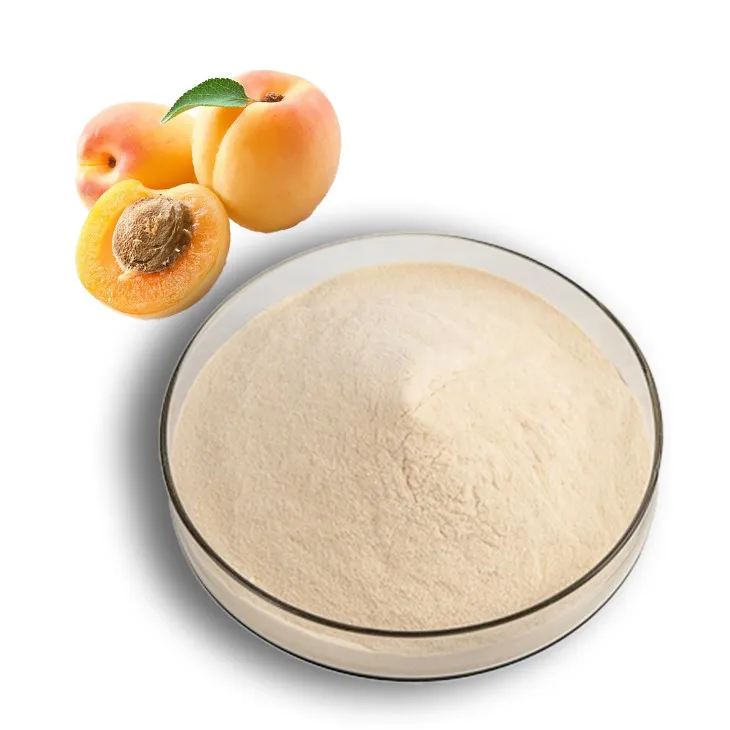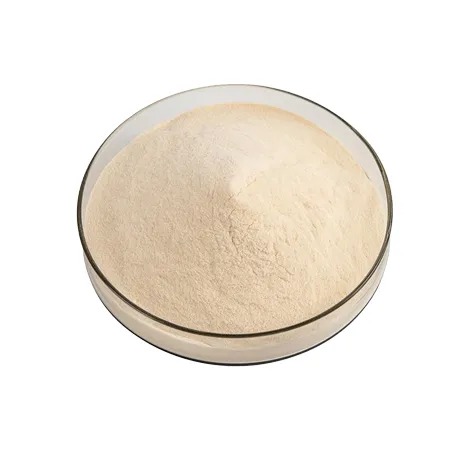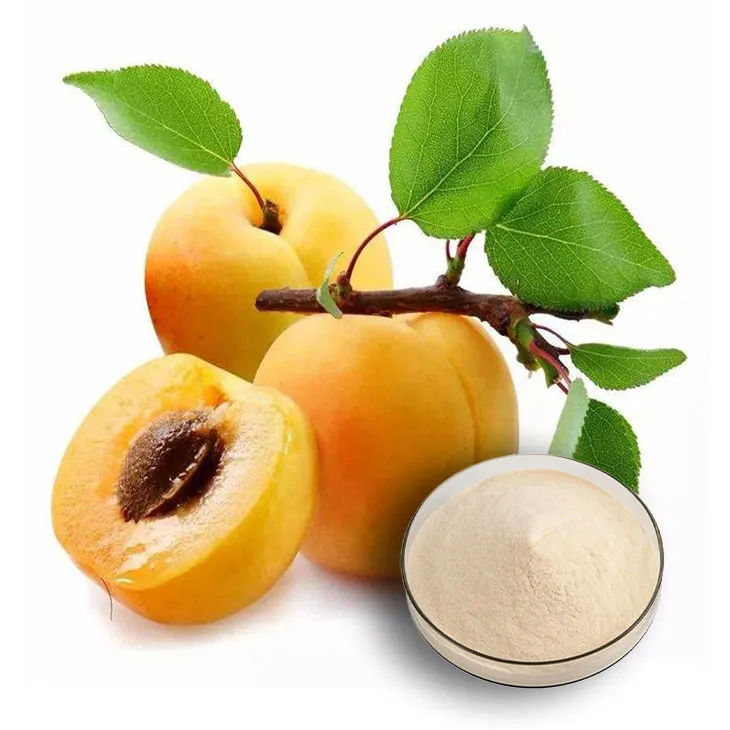- 0086-571-85302990
- sales@greenskybio.com
The best method for extracting apricot powder.
2024-11-28

1. Introduction
Apricot Powder has gained popularity in various industries, including food, cosmetics, and pharmaceuticals, due to its rich nutritional content and unique flavor. Extracting Apricot Powder efficiently, with high purity and cost - effectiveness, is crucial whether for industrial - scale production or home - made extraction. This article will explore different methods of Apricot Powder extraction, analyzing their advantages and disadvantages in terms of the three key factors: efficiency, purity, and cost - effectiveness.

2. Traditional solvent extraction
2.1 Principle
Solvent extraction is a common method used in extracting various substances. In the case of apricot powder extraction, organic solvents such as ethanol or methanol are often used. The principle behind this method is that the active compounds in apricots, such as vitamins, flavonoids, and phenolic compounds, are soluble in these solvents. By soaking the apricot material (usually dried apricot slices or pulp) in the solvent for a certain period, these compounds are dissolved into the solvent.
2.2 Efficiency
The efficiency of traditional solvent extraction can vary depending on several factors. Firstly, the choice of solvent plays a significant role. Ethanol, for example, is a relatively good solvent for many of the desired compounds in apricots. However, the extraction time can be relatively long, often ranging from several hours to days. This is because the diffusion of the compounds from the solid apricot material into the solvent is a slow process. Moreover, agitation and temperature also affect the efficiency. Higher temperatures and proper agitation can increase the rate of extraction, but excessive temperature may cause the degradation of some heat - sensitive compounds.
2.3 Purity
One of the challenges with solvent extraction is achieving high purity. While the solvents can dissolve the desired compounds, they may also extract other unwanted substances. For example, some lipids and pigments may also be co - extracted with the active compounds. This requires additional purification steps such as filtration and chromatography to separate the target compounds from the impurities. Filtration can remove large particles and some insoluble impurities, while chromatography can be more precise in separating different compounds based on their chemical properties.
2.4 Cost - effectiveness
The cost - effectiveness of solvent extraction is a complex issue. On one hand, the solvents themselves can be costly, especially if large quantities are required for industrial - scale extraction. Additionally, the equipment needed for solvent extraction, such as extraction vessels, condensers, and pumps, also adds to the cost. On the other hand, the relatively long extraction time and the need for additional purification steps further increase the overall cost. However, in some cases where high - value compounds are being extracted, the cost may be justified if the purity and yield are satisfactory.

3. Supercritical fluid extraction (SFE)
3.1 Principle
Supercritical fluid extraction is a more advanced technique. Supercritical fluids, such as supercritical carbon dioxide ($CO_{2}$), are used in this method. A supercritical fluid has properties between those of a gas and a liquid. It has a high diffusivity like a gas, which allows it to penetrate into the pores of the apricot material quickly, and at the same time, it has a density similar to a liquid, enabling it to dissolve a wide range of compounds. In the case of apricot powder extraction, supercritical $CO_{2}$ can selectively extract the desired compounds from the apricot matrix.
3.2 Efficiency
Supercritical fluid extraction is generally more efficient than traditional solvent extraction. The extraction time is shorter, usually ranging from a few minutes to a few hours. This is because of the high diffusivity of the supercritical fluid. Also, the extraction can be precisely controlled by adjusting parameters such as pressure, temperature, and flow rate of the supercritical fluid. For example, by increasing the pressure, the solubility of the target compounds in the supercritical $CO_{2}$ can be enhanced, thus increasing the extraction efficiency.
3.3 Purity
One of the main advantages of SFE in terms of purity is its selectivity. Supercritical $CO_{2}$ can be tuned to extract specific compounds while leaving behind many of the unwanted substances. For example, compared to solvent extraction, it can extract the active compounds from apricots with less co - extraction of lipids and pigments. This reduces the need for extensive purification steps. However, in some cases, a small amount of post - extraction purification may still be required to achieve the highest purity.
3.4 Cost - effectiveness
The cost - effectiveness of supercritical fluid extraction is also a matter of consideration. The equipment for SFE is relatively expensive, which includes high - pressure pumps, extraction vessels, and separators. However, the shorter extraction time and reduced need for purification steps can offset some of the cost. Additionally, supercritical $CO_{2}$ is a relatively inexpensive and environmentally friendly solvent compared to some organic solvents. In the long run, for large - scale industrial production, if the quality and yield requirements are high, SFE can be a cost - effective option.

4. Microwave - assisted extraction (MAE)
4.1 Principle
Microwave - assisted extraction utilizes microwave energy to heat the apricot material and the extraction solvent (if used). Microwaves can cause the polar molecules in the apricot cells to vibrate rapidly, which generates heat. This internal heating can break down the cell walls more effectively than traditional heating methods, facilitating the release of the compounds into the solvent. If water is used as a solvent (in the case of water - soluble compounds in apricots), the microwave energy can also increase the solubility of the compounds in the water.
4.2 Efficiency
The efficiency of microwave - assisted extraction is relatively high. The extraction time is significantly shorter compared to traditional solvent extraction, usually ranging from a few minutes to half an hour. This is because the microwave energy can quickly heat the sample and accelerate the extraction process. Moreover, the energy is directly transferred to the sample, reducing heat loss and improving energy efficiency. However, the efficiency may be affected by factors such as the power of the microwave, the sample size, and the type of solvent (if used).
4.3 Purity
In terms of purity, microwave - assisted extraction can have both advantages and disadvantages. On one hand, the rapid heating can cause less degradation of some heat - sensitive compounds compared to longer - term traditional heating methods. This can potentially result in a higher - purity extract. On the other hand, if the extraction conditions are not properly controlled, there may be some interference from the breakdown products of the apricot cells or the solvent. For example, if the microwave power is too high, it may cause excessive breakdown of the cell walls, releasing more unwanted substances.
4.4 Cost - effectiveness
The cost - effectiveness of microwave - assisted extraction is quite favorable. The equipment, a microwave oven, is relatively inexpensive and widely available, especially for home - made extraction. For industrial - scale production, larger - scale microwave extraction systems are also available at a reasonable cost compared to some other extraction methods. The short extraction time also reduces the overall energy consumption and labor cost, making it a cost - effective option for both small - scale and large - scale extraction.
5. Enzyme - assisted extraction
5.1 Principle
Enzyme - assisted extraction involves the use of specific enzymes to break down the cell walls of apricots. For example, cellulases and pectinases can be used. These enzymes target the polysaccharides in the cell walls, such as cellulose and pectin. By hydrolyzing these polysaccharides, the cell walls are weakened, and the internal compounds of the apricot cells are more easily released. This method is often used in combination with other extraction methods, such as solvent extraction or water extraction.
5.2 Efficiency
The efficiency of enzyme - assisted extraction depends on several factors. The choice of enzymes and their activity is crucial. Enzymes with high activity can break down the cell walls more quickly, reducing the extraction time. However, the enzymatic reaction also requires specific conditions, such as appropriate temperature, pH, and reaction time. If these conditions are not met, the efficiency may be reduced. In general, enzyme - assisted extraction can significantly improve the extraction efficiency when combined with other extraction methods, as it can enhance the release of the target compounds from the apricot cells.
5.3 Purity
Regarding purity, enzyme - assisted extraction can have a positive impact. Since the enzymes specifically target the cell walls, they are less likely to cause the extraction of unwanted substances compared to some harsher extraction methods. However, the enzymes themselves need to be removed from the final extract to ensure high purity. This can be achieved through methods such as heat inactivation followed by filtration. If the enzyme removal is not complete, it may affect the quality and purity of the apricot powder.
5.4 Cost - effectiveness
The cost - effectiveness of enzyme - assisted extraction needs to be carefully considered. The cost of enzymes can be relatively high, especially for high - quality and specific enzymes. However, the improved extraction efficiency and potentially higher purity can offset some of the cost. In addition, the use of enzymes can reduce the need for more expensive extraction solvents or longer extraction times in some cases. For industrial - scale production, the cost - effectiveness can be optimized by carefully selecting the enzymes and controlling the extraction conditions.
6. Comparison and conclusion
- Efficiency: Supercritical fluid extraction and microwave - assisted extraction generally show higher efficiency in terms of shorter extraction times compared to traditional solvent extraction. Enzyme - assisted extraction can also improve efficiency when combined with other methods.
- Purity: Supercritical fluid extraction has an advantage in selectivity and can achieve relatively high purity with less need for additional purification steps. However, proper control of extraction conditions is important for all methods to ensure high purity.
- Cost - effectiveness: Microwave - assisted extraction is cost - effective for both home - made and small - scale industrial extraction due to its relatively inexpensive equipment and short extraction time. Supercritical fluid extraction may be more cost - effective for large - scale industrial production with high - quality requirements in the long run, despite the high initial equipment cost. Enzyme - assisted extraction's cost - effectiveness depends on the cost of enzymes and the overall improvement in extraction efficiency and purity.
In conclusion, the choice of the best method for apricot powder extraction depends on various factors such as the scale of production, the desired purity, and the budget. For home - made extraction, microwave - assisted extraction may be a convenient and cost - effective option. For industrial - scale production, a combination of methods or the choice of supercritical fluid extraction or enzyme - assisted extraction (depending on specific requirements) may be more appropriate.
FAQ:
What are the main factors to consider when choosing a method for extracting apricot powder?
When choosing a method for extracting apricot powder, several main factors need to be considered. Firstly, efficiency is crucial. A high - efficiency method can extract a sufficient amount of apricot powder in a relatively short time. Secondly, purity matters. The purer the extracted apricot powder, the better its quality and potential applications. For example, in the food and pharmaceutical industries, high - purity apricot powder is often required. Cost - effectiveness is also an important factor. The extraction method should not be too expensive in terms of equipment, raw materials, and energy consumption, especially for industrial - scale extraction.
Can traditional methods be effective for extracting apricot powder?
Traditional methods can have some effectiveness in extracting apricot powder. For example, some simple drying and grinding methods have been used for a long time at home. However, these methods may have limitations in terms of efficiency and purity. They may not be able to extract the maximum amount of useful components from apricots, and the resulting powder may contain more impurities compared to more advanced extraction methods. But they can still be a viable option for small - scale, home - made extraction due to their simplicity and low cost.
Are there any modern technological methods for apricot powder extraction?
Yes, there are several modern technological methods for apricot powder extraction. One common method is supercritical fluid extraction. This method uses supercritical fluids, such as supercritical CO₂, which has properties between a gas and a liquid. It can selectively extract the desired components from apricots with high efficiency and purity. Another method is enzymatic extraction. Enzymes can break down the cell walls of apricots more effectively, facilitating the release of the substances for powder extraction. These modern methods are often more suitable for industrial - scale production due to their high - tech nature and better control over the extraction process.
How does the extraction method affect the quality of apricot powder?
The extraction method has a significant impact on the quality of apricot powder. As mentioned before, the purity of the powder is directly related to the extraction method. If the method is not efficient in separating the desired components from unwanted substances, the resulting powder may have a lower quality. For example, a method that causes excessive heat during extraction may damage some of the heat - sensitive components in apricots, reducing the nutritional value and functionality of the powder. On the other hand, a gentle and precise extraction method can preserve more of the beneficial compounds in apricots, resulting in a higher - quality apricot powder.
What are the cost - effective extraction methods for apricot powder?
For cost - effective extraction of apricot powder, some relatively simple mechanical methods can be considered. For example, simple pressing followed by drying and grinding can be a low - cost option, especially for small - scale or home - made extraction. In an industrial setting, optimizing the use of traditional extraction methods with some modern improvements can also be cost - effective. For instance, improving the efficiency of a drying process in a traditional extraction method can reduce energy consumption and overall cost. However, it's important to balance cost - effectiveness with the quality requirements of the apricot powder.
Related literature
- Advanced Techniques in Fruit Powder Extraction"
- "Optimizing Apricot Processing for Powder Production"
- "Comparative Study of Different Extraction Methods for Apricot - Based Products"
- ▶ Hesperidin
- ▶ citrus bioflavonoids
- ▶ plant extract
- ▶ lycopene
- ▶ Diosmin
- ▶ Grape seed extract
- ▶ Sea buckthorn Juice Powder
- ▶ Beetroot powder
- ▶ Hops Extract
- ▶ Artichoke Extract
- ▶ Reishi mushroom extract
- ▶ Astaxanthin
- ▶ Green Tea Extract
- ▶ Curcumin Extract
- ▶ Horse Chestnut Extract
- ▶ Other Problems
- ▶ Boswellia Serrata Extract
- ▶ Resveratrol Extract
- ▶ Marigold Extract
- ▶ Grape Leaf Extract
- ▶ blog3
- ▶ blog4
-
Extraction process of wheat germ extract.
2024-11-28
-
100% Pure Natural L - Theanine Powder.
2024-11-28
-
The best nutmeg extract in nature.
2024-11-28
-
Organic Vitamin B9 Powder Factory.
2024-11-28
-
Chinese Dandelion Root Extract Factories.
2024-11-28
-
Lemon Extract
2024-11-28
-
Cactus Extract
2024-11-28
-
Lily extract
2024-11-28
-
Dan Shen Root Extract/Salvia Root Extract
2024-11-28
-
Baicalin
2024-11-28
-
Quercetin
2024-11-28
-
Dandelion Leaf Extract
2024-11-28
-
Horse Chestnut Extract
2024-11-28
-
Reishi mushroom extract
2024-11-28
-
Tinospora cordifolia extract
2024-11-28





















